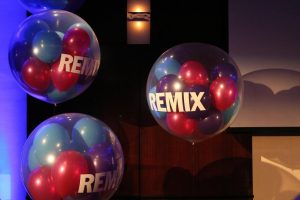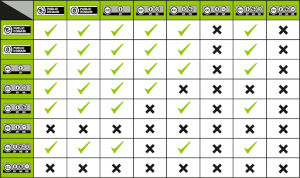2 Finding, Evaluating, and Adapting Resources
Teachers have always created and shared teaching materials, though finding and reusing others’ work is not always simple.[1] This chapter will teach you how to find free and openly licensed teaching resources that already exist and adapt them for use in your own classrooms.
Why It Matters
If you’re going to find the best open resources for your course, and share your work as OER, and join an OER community of practice, you need to know how to find, evaluate, and adapt openly licensed resources. And what if we want to think bigger, what effect might open education have globally?
How is the openness, the opportunity to revise, remix and share, of content potentially impactful on a global scale? If the public had access to and could creatively remix the world’s knowledge, what new opportunities might we find to address global challenges (e.g., United Nations Sustainable Development Goals)
Learning Outcomes
- Find OER in open repositories, Google, CC Search, and other platforms
- Evaluate how to reuse, revise, and remix the OER you find
- Demonstrate how different OER can be used together, paying attention to license compatibility.
Personal Reflection: What it Matters to You
Where do you currently find your learning resources? Do you seek open alternatives for materials you currently use? How do you evaluate your existing learning resources, and how can you apply those measures to openly licensed content?[2]
Once you identify the learning resources you currently use, ask yourself the following questions:
- Is this resource available to all of my learners at no cost?
- Can my learners and I keep a copy of this resource forever?
- Does my class have the legal rights to fix errors, update old or inaccurate content, improve the work, and share it with other educators around the world?
- Can my learners contribute to and improve our learning resources as part of their course work?
If the answer to these questions is “No,” you’re likely using learning resources that don’t provide the legal permissions you and your learners need to do what you want to do. Conversely, if you answered “Yes” to all of the questions, you are likely using OER.
Acquiring Essential Knowledge
Finding Resources
Not everything on the internet is OER, and some works labeled as “open” may not have the legal permissions to exercise the 5Rs. So how do you recognize OER and how do you choose which OER will work best in your class? Remember that for a resource to be an OER it has to be available to everyone at no cost and be in the public domain or under an open license.
Finding the resources you want to use is the first step to bringing OER into your classroom. Discovery is one of the primary barriers to educators using OER. Fortunately, there are many established ways to search for OER.
First, for a short introduction on how to find OER, watch this video:
If you want to know more about most popular general options for searching for OER, you might consider reading through this Open Washington course module.
OER Repositories and Search Tools
There are many websites that host large collections of OER (e.g., Wikimedia Commons), but some universities host their own OER repositories and services. A good first step is to do a general OER search using Google Advanced Search and filter your results by “Usage Rights” (pull-down menu at the bottom of the screen). See Google’s post on how to use the tool effectively.
There are also hundreds of online platforms on which you can share your openly licensed content. Creative Commons maintains a directory of some of the most popular OER platforms used by educators organized by content type (photos, video, audio, textbooks, courses, etc.), and here are a handful of largest, most often used OER search tools and repositories:
Try searching several different platforms and meta-search tools to find the greatest number of results to choose from.
Listservs and Google Groups
Open educators often ask each other for help when looking for OER on email listservs and Google Groups. Here are a few you might want to join:
- SPARC LibOER
- Community College Consortium for Open Educational Resources (CCCOER) Google Group
- Creative Commons Open Education Platform Mailing List
- Iowa OER Google Group
Openly Licensed Images
As you begin to use and create OER, remember that the images you use should be free and openly licensed, as well. Here are some sources you might consider for openly licensed images:
- Creative Commons CC Search
- Library of Congress Flickr Account
- The Met Collection
- Unsplash
- The Noun Project
- Nappy: Beautifully Diverse Stock Photos
Evaluating Sources
Just like any other teaching resources, you need to carefully evaluate the OER you plan on using in your teaching. Educators who are new to OER may have concerns about quality because OER are available for free and may have been remixed by other educators. The process of using and evaluating OER is not that different from evaluating traditional all-rights-reserved copyright resources. Whether education materials are openly licensed or closed, you are the best judge of quality because you know what your learners need and what your curriculum demands.
Subject specialists (educators and librarians) assess the quality and suitability of learning resources, often along the following criteria[3]:
| Comprehensiveness | Does it look like it covers the topic thoroughly and completely? |
| Accuracy | Do you notice any errors or inaccuracies? |
| Relevance | Does it fit your objectives? |
| Longevity | Will this resource remain relevant for a sufficient period of time? |
| Clarity | Will it be readable and easy to understand for your students? |
| Consistency | Does the OER have a unified style, perspective, and content? |
| Modularity | Can you easily change the order of chapters or sections, or delete sections entirely, and still have the work make sense? |
| Organization/Structure/Flow | Is the OER organized well into sections, headings, and chapters? Does the structure assist with accessibility? Does the content follow a logical progression? |
| Interface | How easy is the resource to use and navigate? |
| Grammatical Errors | Does the work seem like it was proofread? |
| Cultural Relevance | Who is this work speaking to? Who is it leaving out? |
And be careful not to let anyone tell you OER are “low quality” because they are free. As the SPARC OER Mythbusting Guide points out:
- In this increasingly digital and internet connected world, the old adage of “you get what you pay for” is growing outdated. New models are developing across all aspects of society that dramatically reduce or eliminate costs to users, and this kind of innovation has spread to education resources.
- OER publishers have worked to ensure the quality of their resources. Many open textbooks are created within rigorous editorial and peer-review guidelines, and many OER repositories allow faculty to review (and see others’ reviews of) the material. There is also a growing body of evidence that demonstrates that OER can be both free of cost and high quality—and more importantly, support positive student learning outcomes.
Also, be careful not to get pulled into a debate about “high or low quality education resources,” when what educators should really be concerned about is “effectiveness.” Read these two posts from David Wiley: Stop Saying “High Quality” and No, Really – Stop Saying “High Quality.”
Remixing and Adapting Resources
Openly licensing learning materials enables educators to use the materials more effectively, which can lead to better learning and student outcomes. OER can be remixed and adapted, updated, tailored and improved locally to fit the needs of learners by translating the OER into a local language, adapting a biology open textbook to align it with local science standards, or modifying an OER simulation to make it accessible for a student who cannot hear.
The ideas of remix and adaptation are fundamental to education. Creative reuse of materials created by other educators and authors is about more than just seeking inspiration; we copy, adapt, and combine different materials to craft education resources for our learners.

Incorporating materials created by others and combining materials from different sources can be tricky, not only from a pedagogical perspective, but also from a copyright perspective.
Online digital education resources have different legal permissions that empower (or not) the public to use, remix and share those resources. Here are a few of those legal categories:
- Public domain works (not restricted by copyright) can be remixed with any work. For example, anyone can remix the Adventures of Huckleberry Finn by Mark Twain with Alice’s Adventures in Wonderland by Lewis Carroll.
- All-rights-reserved copyrighted works, available for free online, which you can only use under the project terms of service, or using an exception or limitation to copyright, such as fair use or fair dealing. For example, many MOOCs allow free reuse of their content, but do not allow copying, revise, remix, or redistribution.
- All-rights-reserved copyrighted works in closed formats do not allow the public to remix or adapt a work. For example, a blockbuster movie available only in streaming service that you cannot use or even link to.
- Creative Commons licensed works (and other free licenses) that have various permissions and restrictions. For example, Wikipedia (BY-SA) allows you to reuse their content for commercial purposes, while WikiHow (BY-NC-SA) does not. A Wikipedia article cannot be remixed with a WikiHow article.
If you want to know which CC licensed works can be remixed with other CC licensed works, check out the CC Remix Chart below. Where there is a green check at the intersection of two CC licensed works, you can remix those two works. Where you see a black X, you cannot remix those two CC licensed works.

Final remarks
We live in a world of information abundance, and an increasing percentage of our digital knowledge is openly licensed. Finding the right open resources that fit the needs of your learning spaces and your learners can be a challenge. One of the major motivations for using OER is the ability to revise, remix, and share these works to best suit the needs of your learners. Search engines, OER repositories and platform services with built-in tools for using Creative Commons licenses help, but finding the right OER still takes time.
- This chapter is adapted from The Creative Commons' CC Certificate Resources, Chapter 5: Creative Commons For Educators, published under a Creative Commons Attribution 4.0 International License. ↵
- This worksheet from University of Iowa' OpenHawks program can help with evaluating the OER you find. ↵
- Adapted from Open Textbooks Review Criteria from the Open Textbook Network: https://open.umn.edu/opentextbooks/reviews/rubric ↵
Works not protected by copyright; they belong to the public and can be used in any way without permission from the creator(s).
A form of protection provided by the laws of the United States to the authors of “original works of authorship” that are fixed in a tangible form of expression. An original work of authorship is a work that is independently created by a human author and possesses at least some minimal degree of creativity. A work is “fixed” when it is captured (either by or under the authority of an author) in a sufficiently permanent medium such that the work can be perceived, reproduced, or communicated for more than a short time.
Licenses that work with traditional copyright to enable use and reuse of others' works by communicating in a standardized way the rights a creator wants to share with others. CC Licenses are: CC BY, CC BY-SA, CC BY-NC, CC BY-NC-SA, CC BY-ND, CC BY-NC-ND.

